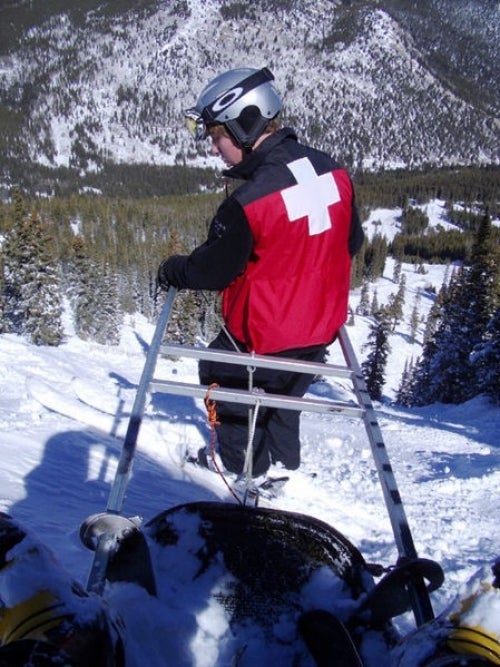If you would like to see more information on this case study, click here!
You can request this case study and a WCDE staff member will get back to you.
In the event that a skier or a snowboarder injures themselves on a trail, ski patrollers are trained to load the injured person onto a ski patrol toboggan to carry the person safely down the hill where medical treatment can be administered. Adam, Keegan, Jacob, Nick and Brittany, members of a capstone design team at University of Waterloo, went skiing on their winter 2014 co-op term and witnessed this rescue process in action. They watched a ski patroller transporting a rescue toboggan up the chairlift and down the hill to an injured person, and observed that the toboggan was bulky and difficult to maneuver. The challenges faced by the ski patroller in operating the rescue toboggan motivated the design team to investigate an alternative method of transporting an injured person down a ski hill. This problem became more significant after a discussion with Ski Patrol at Chicopee Ski Hill, Ontario, who noted concerns with the amount of effort required to control the descent of the toboggan while transporting an injured person, the lack of a fail-safe mechanism to prevent unintended motion, as well as the overall bulkiness of the device.
Adam, Keegan, Jacob, Nick and Brittany decided to explore this opportunity for their fourth year design project under the supervision of Professor Chandrashekar.

Ski patroller handling a rescue toboggan
The main teaching objective of this case study is to provide an opportunity for students to practice the design process by applying it to a real world application. There is an emphasis on the Needs Analysis and Conceptual Designs.
If you would like to see more information on this case study, click here!
You can request this case study and a WCDE staff member will get back to you.
Contact Waterloo Cases in Design Engineering
Steve Lambert
Tel: (519) 888-4728
Email: steve@uwaterloo.ca
The University of Waterloo acknowledges that much of our work takes place on the traditional territory of the Neutral, Anishinaabeg, and Haudenosaunee peoples. Our main campus is situated on the Haldimand Tract, the land granted to the Six Nations that includes six miles on each side of the Grand River. Our active work toward reconciliation takes place across our campuses through research, learning, teaching, and community building, and is co-ordinated within the Office of Indigenous Relations.